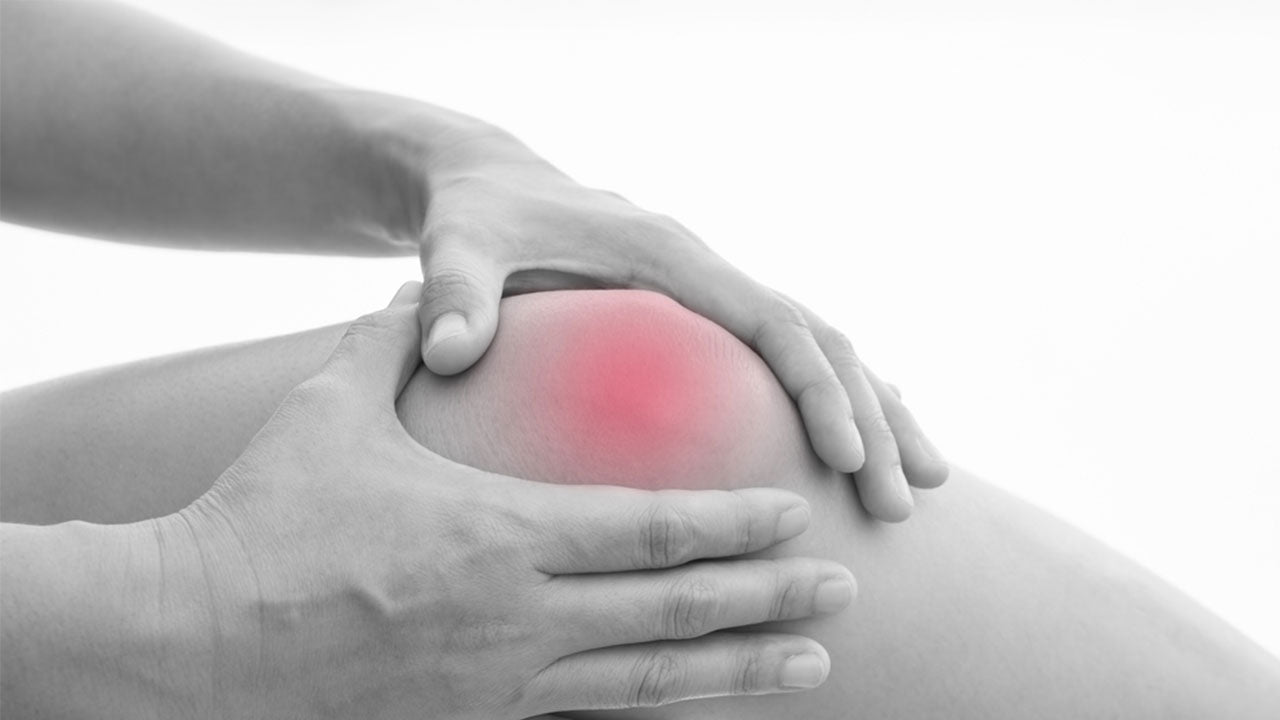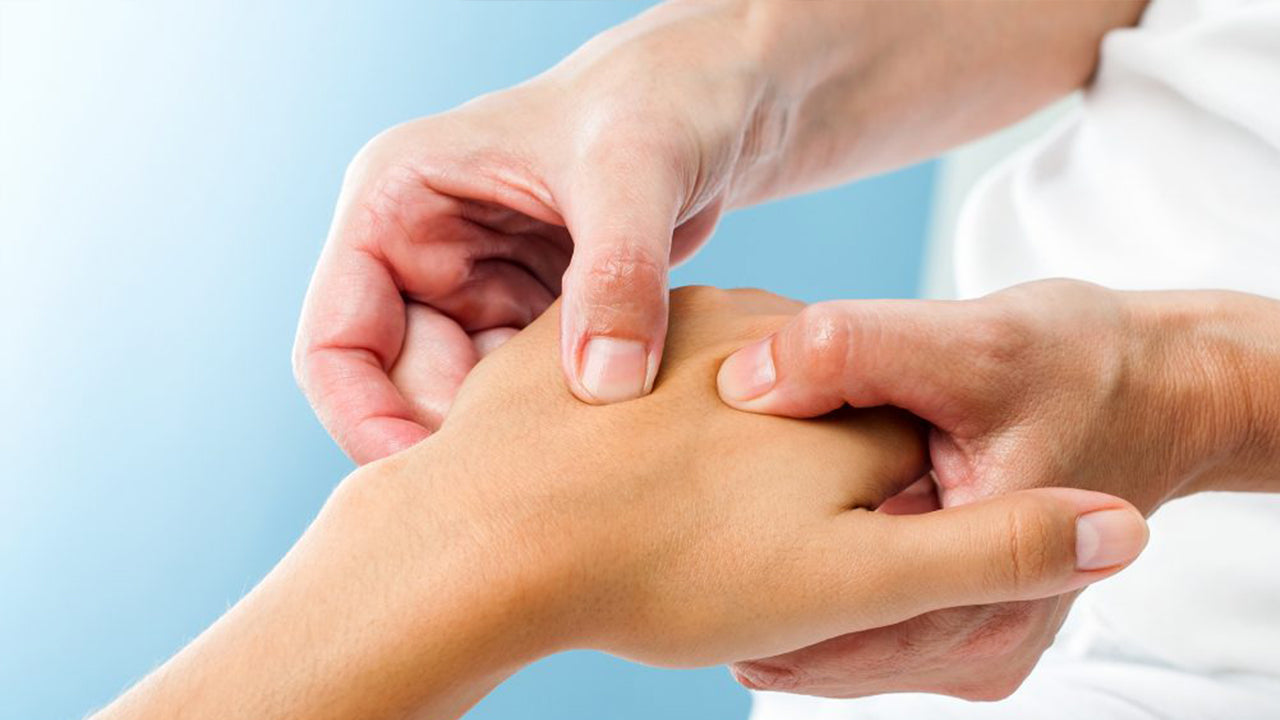Different Types of Musculoskeletal Pain and How to Tackle Their Treatment
 By: by Amino Science
By: by Amino Science

Musculoskeletal pain is any pain taking place in our muscles, bones, nerves, joints, tendons, or ligaments. That could be localized pain in your back or full-body pain that comes with disorders like fibromyalgia. This article discusses the symptoms of musculoskeletal pain and how to go about seeking treatment and pain management in a safe, healthy way.
Causes of Musculoskeletal Pain
The most common symptom of musculoskeletal disorders is pain, anywhere from mild and aching to severe pain. Certain health conditions can bring on long-lasting chronic pain (longer than 3 months), while some contribute to short-lived instances of acute pain. The pain experienced may be concentrated or widespread throughout the body. Here are some of those conditions.
- Joint pain (arthralgia) and joint inflammation (arthritis): Arthritis is a chronic inflammatory condition, and types of arthritis include osteoarthritis, psoriatic arthritis, rheumatoid arthritis, and other autoimmune issues such as gout, ankylosing spondylitis, and lupus. Joint pain can also be felt if there's an issue with bursae sacs, which are small fluid-filled pockets that provide cushion between many of our joints.
- Bone disorders: Conditions including osteoporosis, scoliosis, and osteomyelitis (a bone infection) can cause pain in your bones. Bone pain is usually dull and deep, and may also be a sign of cancerous tumors within the bones or pressing against the bones.
- Muscle conditions: Muscle pain is known as "myalgia," and while it's often less intense than bone pain, a muscle spasm like a Charley horse can be shockingly painful. A life-threatening condition such as rhabdomyolysis (muscle disintegration) can be caused by injury, loss of blood flow, or overuse (including intense workouts), and causes pain when it disrupts kidney function. The disorder polymyalgia rheumatica causes severe pain in the neck, shoulders, upper back, lower back, and hips. Sarcopenia (age-related muscle loss) leads to aches and pains as it causes weaker muscles, which leads to weaker bones, a higher risk of injury, and lower muscle reserves when the amino acid content of your musculature is needed in times of crisis and healing (wound repair, fighting infection).
- Tendon and ligament pain: When tendons and ligaments are stretched too far, compressed, irritated, or injured, tendon and ligament pain can ensue. Connective tissue pain is often sharper than bone pain and can point to common conditions such as tendonitis of the wrist, elbow, foot, etc., as well as sprains and tears due to injury.
- Nerve pain: Conditions such as carpal tunnel syndrome cause pain by compressing the nerves and sending waves of radiating pain throughout the body. Fibromyalgia, largely still misunderstood, is likely a central nervous system disorder and pain condition that involves trigger points throughout the body and can affect the muscles, tendons, and ligaments, as well as cause sleep disturbances.
- Injuries and overuse: These are external causes of pain, such as car accidents, sports injuries, or serious falls that result in broken bones or torn tissues. Overuse, poor posture, and long-term bed rest due to surgery or illness can also result in musculoskeletal pain.
The aforementioned conditions are general causes of acute and chronic musculoskeletal pain, and just a handful of the hundreds of pain syndromes and disorders that can befall us. In fact, sometimes organ conditions can cause pain in other areas of the body (known as referred pain), like spleen pain manifesting as shoulder pain, a kidney stone presenting as back pain, or a heart attack causing pain in one's left arm.

Musculoskeletal Pain Symptoms and When to See a Doctor
If you have unexplained pain, it's important to seek medical advice as soon as possible. Musculoskeletal conditions can range from mild concerns like low back pain due to bad posture or conditions as serious as cancer.
Your physician will most likely ask for your symptoms and medical history. It can be difficult to describe the musculoskeletal pain you may be feeling. Perhaps the following descriptions can help you identify your pain clearly in the hopes of receiving a quick diagnosis.
- Joint pain: Usually easy to pinpoint due to its location, joint pain often involves aching, burning, swelling, and stiffness.
- Bone pain: Deep and dull, bone pain may be far more difficult to ignore than soft tissue pain.
- Muscle pain: Cramps, aches, and muscle seizures tend to come on fast and are very apparent. A cramp with a known cause that subsides may not need medical attention, but persistent muscle pain could indicate an underlying disorder, vitamin deficiency, or injury.
- Tendon pain: Often sharp at the time of injury, tendon pain amplifies when you use the tendon and only abates when you rest. Tendon injuries may worsen if you don't get treatment right away.
- Nerve pain: A compressed nerve may present with "pins and needles" sensations, tingling, burning, soreness, weakness, or uncontrolled twitching in the area.
Keep in mind that conditions such as lupus and fibromyalgia don't often have a centralized point of pain, but instead manifest as all-over aching. Your doctor may run tests to confirm the diagnosis.

Diagnosing Musculoskeletal Pain
Your health care professional may use the following tools to diagnose the pain you're experiencing.
- Physical examination: Many doctors are able to narrow down the causes of pain by manipulating the body and asking targeted questions about the pain you're feeling.
- Blood tests: A blood test may quickly reveal the specific condition you're dealing with, such as rheumatoid arthritis.
- Imaging tests: X-rays can reveal the condition of your bones, while an MRI or CT scan can help diagnose conditions affecting the soft tissues, including muscles, tendons, ligaments, and bursae.
- Joint fluid tests: A joint aspiration procedure can provide fluid that may reveal whether you're dealing with an infection or a condition like gout.

Various Musculoskeletal Pain Treatments
The treatment you need depends on the cause of the pain you're experiencing. Your condition may require the following expertise.
- Rheumatology: A rheumatologist is called for in cases of arthritis, rheumatism, and other disorders of the joints, ligaments, and muscles.
- Chiropractic care: A chiropractor can treat lower back pain caused by skeletal or joint misalignments (instead of by diseases like cancer) with orthotic shoes, braces, and therapies, as well as any nerve disorders that arise from an issue surrounding the spinal cord.
- Neuropathic care: Nerve disorders or pain from central nervous system damage are best treated by a neuropathologist.
After the underlying cause of pain is identified, pain management of the musculoskeletal system becomes key. This may involve physical therapy like therapeutic massage, acupuncture or acupressure treatment options, biofeedback techniques, or pain-relieving medications (anything from acetaminophen, NSAIDs like ibuprofen, corticosteroid injections, or opioids). Natural anti-inflammatory aids are often preferable over pharmaceutical drugs if they work for you, and support devices such as orthotics may help you avoid more extreme remedies, including surgery.

Amino Acid Support for Musculoskeletal Pain
Musculoskeletal pain, as the name suggests, involves both the musculature, the skeleton, and the connective tissues like joints and ligaments that bind them together. Amino acids are the building blocks of protein and muscle, but they have responsibilities throughout the body in tissue creation, tissue maintenance, hormone balance, and more. Here's how maintaining proper amino acid levels can help relieve musculoskeletal pain.
- Natural analgesic assistance: Analgesics drugs are pain relievers, but the body has its own analgesic system in the pain-modulating neurotransmitters serotonin, endorphin, and the amino acid GABA (gamma aminobutyric acid). For example, amino acid supplementation with tryptophan has led to fibromyalgia pain relief in a matter of days, effective treatment even when the cause of the pain is still unclear.
- Joint pain relief: Collagen amino acids can help relieve pain in arthritic and injury-related joint pain by repairing and improving connective tissue function. Collagen is not just isolated to our tendons and ligaments but helps to strengthen our muscles, bones, and skin as well.
- Muscle repair: All nine essential amino acids (EAAs) are required to build new muscle cells. In muscle disorders that lead to wasting or painful muscle injuries, repairing and rebuilding muscle tissue can only be done with a full, balanced host of the essential amino acids, otherwise the body is forced to harvest healthy cells for those compounds (what's known as catabolism).
- Bone health: Bones have a similar (albeit slower) turnover and rejuvenation process as muscles and require many of the same substances, including collagen molecules and the essential amino acids. In cases of bone degeneration like osteoporosis, retaining bone density is paramount and cannot be done if there's an amino acid deficiency.
Amino acids are found naturally in protein foods like eggs, dairy, animal meats, nuts, and plant foods like legumes, but the amino acid makeup varies in each one. To ensure you have a consistently balanced amount of the essential amino acids, we suggest a comprehensive EAA supplement like the one designed by the doctors and developers here at Amino Co.
Proper Treatment
The type of specialist or treatment you need can only be found once you've identified where your musculoskeletal pain is coming from and its cause. Assess your symptoms, consult an expert, and get the proper treatment you deserve as quickly as possible so you can maintain your precious health.

Up to 25% off Amino
Shop NowTAGS: conditions
Join the Community
Comments (0)
Most Craveable Recipes




 833-264-6620
833-264-6620



















